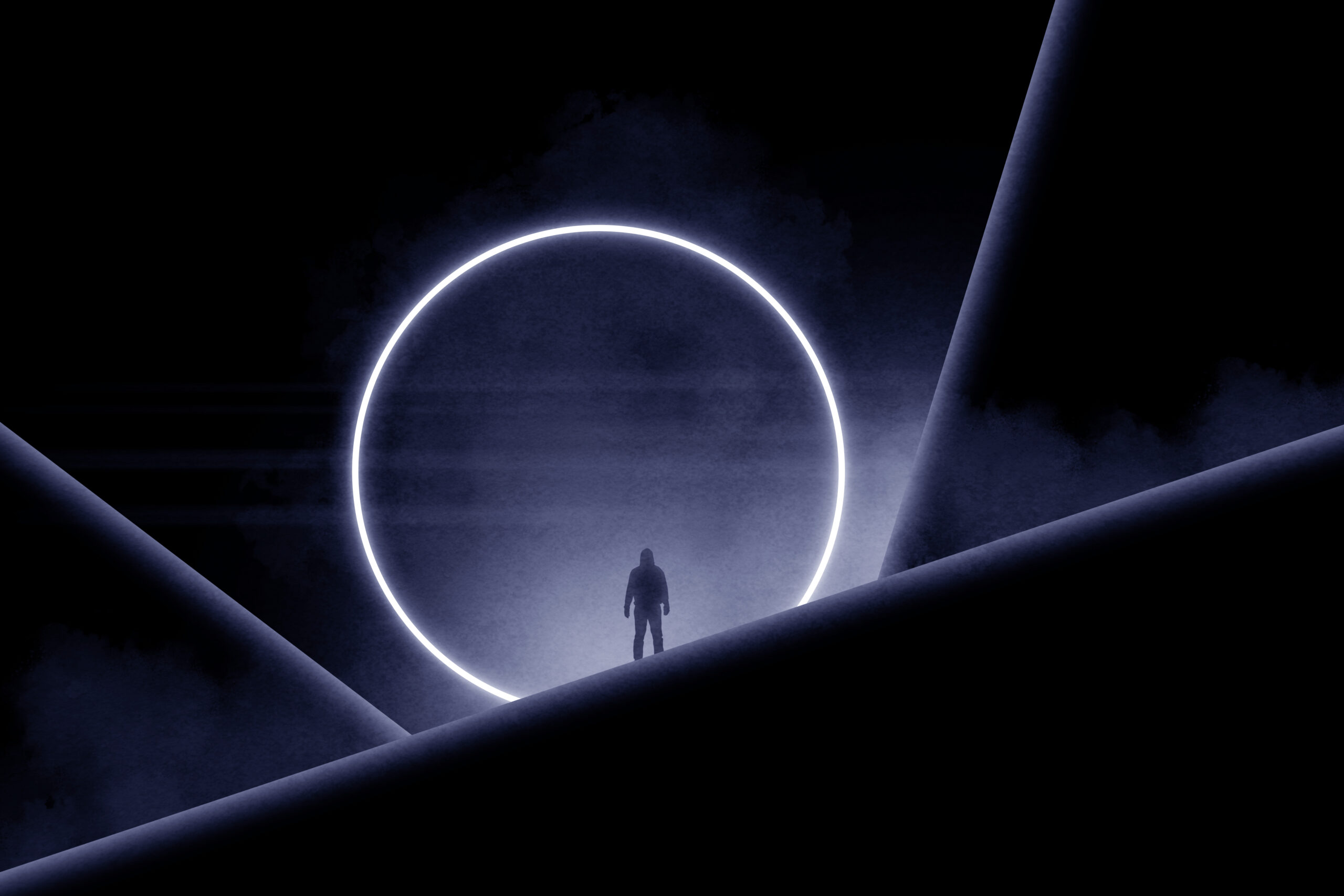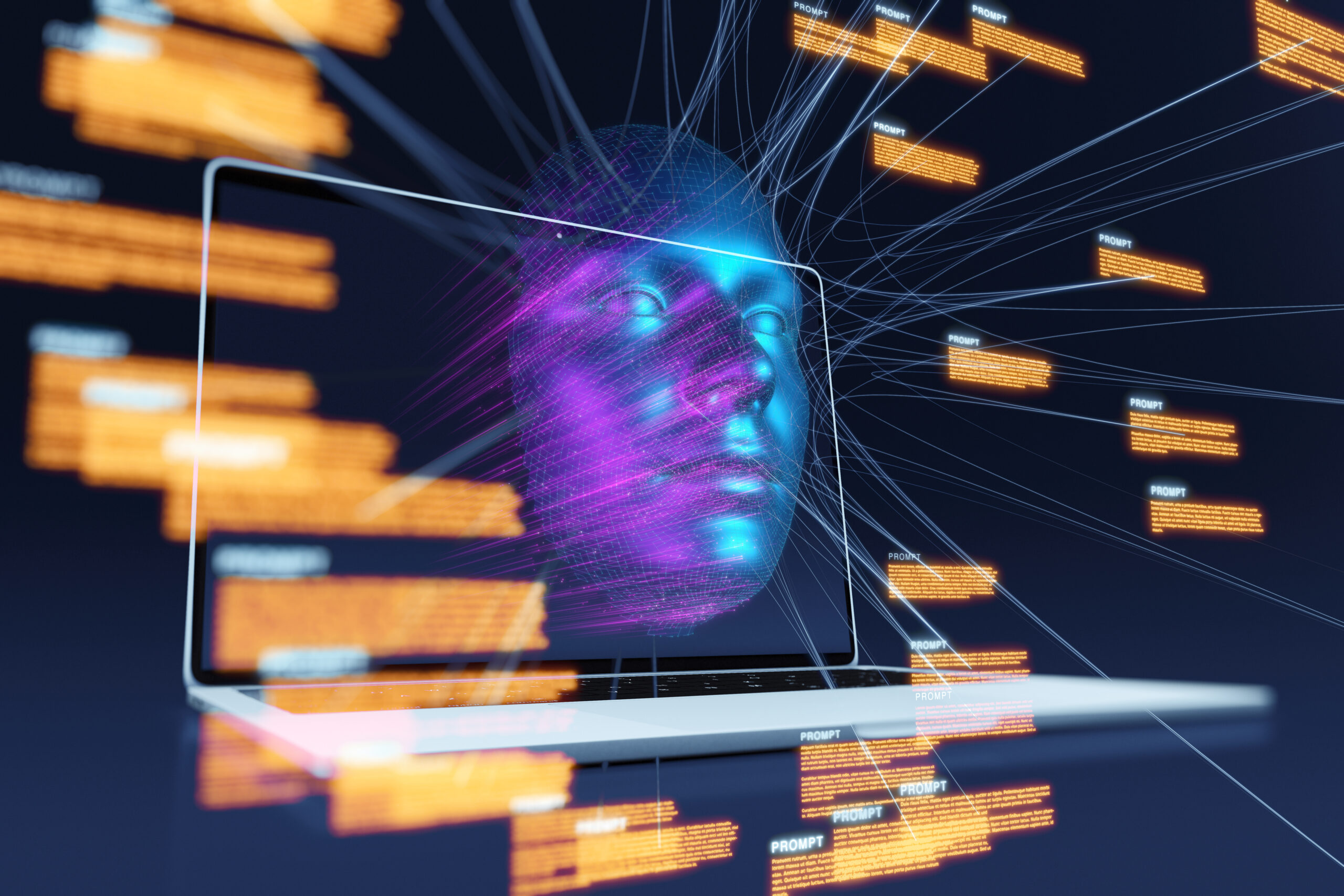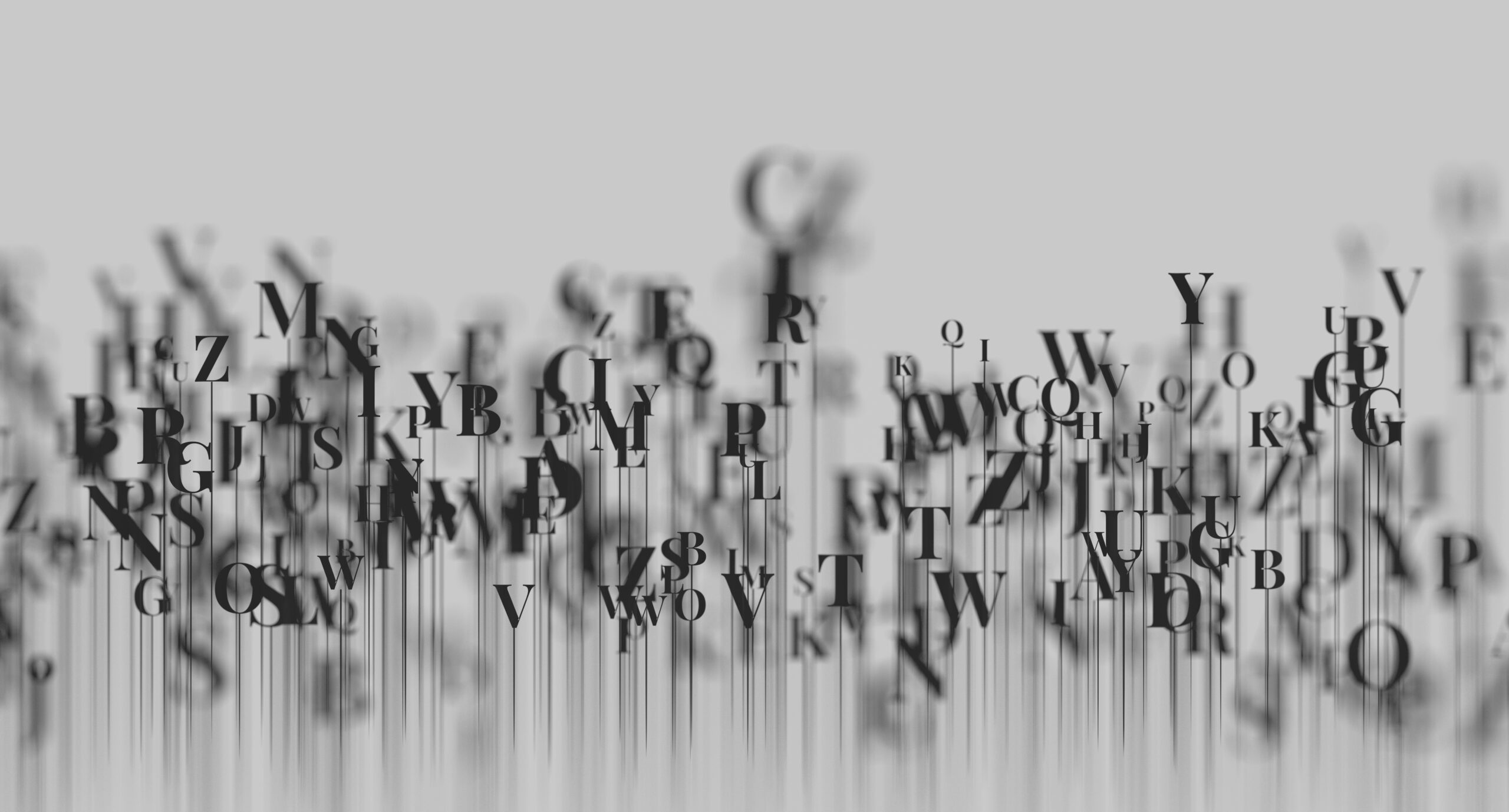A skeptical observer goes looking for AI bias.
The Exterior Darkness

When it comes to artificial intelligence, what are we really afraid of?
We have spent so much effort learning that external things are not as they appear to us to be–well then! the case is the same with the inner world!
—Friedrich Nietzsche, Daybreak §116
It’s Alan Turing’s world: we’re all just living in it. His “Imitation Game,” now known simply as the “Turing Test,” helped determine how we think about our machines. It also claimed to determine whether our machines might think about us. Now that we are all transfixed by the eerie gaze of AI-generated human faces, Turing’s thought experiment is teetering on the knife-edge of reality. “If I am having a conversation with someone, and I cannot tell whether it is a human or an AI—that’s the end of democracy,” frets Yuval Noah Harari, the notorious techno-futurist. What might happen if we lose the ability to distinguish between products of human thought and machine activity?
Turing published his paper on intelligent computers in 1950, after the war he helped win for Britain by decoding Nazi messages. In two years’ time he would be arrested and chemically castrated for sleeping with Arnold Murray, a 19-year-old waif whose friend robbed Turing’s house. In hindsight, revisiting the surprisingly readable prose of “Computing Machinery and Intelligence,” it’s hard not to imagine the author as a man shut out from himself: alienated from his own desires, from the men he loved, and from the normal rituals of courtship that define so much of most people’s adulthood. Alan Turing gives the melancholy impression of a man on the outside of everyday life, looking in.
In a way, that’s the premise of the whole essay: the outside of another mind is all we can ever know. Proposing to answer the question, “Can machines think?” Turing proceeds to argue that the answer will be “yes” when a machine can respond to a human in a manner indistinguishable from other humans. The examiner will sit in a closed room, asking questions. He will get two sets of written answers, one from a computer program and one from a person. If he regularly mistakes the machine for the man, the machine is “thinking” in every meaningful sense of the term.
Objections to this definition often make reference to something we might call “the inner life.” This internal experience of things is attributed to humans, but not to machines that can talk like humans. Turing quotes a lecture by the neurologist Geoffrey Jefferson: “Not until a machine can write a sonnet or compose a concerto because of thoughts and emotions felt, and not by the chance fall of symbols, could we agree that machine equals brain.”
If I approach the AI language software Chat GPT or ChatGPT Plus with the prompt “write me a sestina about airplanes,” I will already get something pretty passable. In a few years I might get better work than most creative writing graduates can deliver. But, Professor Jefferson would say, the MFA student has written her poem by reflecting on the qualitative experience of flying in airplanes. Behind her words there is some flutter of the heart or dizzy exhilaration, which she has tried to trace in outline upon a screen of language.
ChatGPT is doing no such thing: it is running a series of calculations. The input is a set of numbers with relationships determined by the prompt, and the output is a set of numbers that mimics those associated with sestinas about airplanes. That’s all computers really do, anyway: change one set of numbers into another set of numbers.
The Big Black Box
A simple example can indicate how the thing works. I could decide that the word “man” corresponds to the binary number 01, and the word “woman” corresponds to the binary number 10 (i.e., two). Then I could decide that the number 11 (i.e., three) represents a baby. Finally, I could design a computer program that takes whatever inputs I give it and adds them together. If I put “man” and “woman” into that program, the output will be “baby.” No one would then say that my machine thinks a man and a woman make a baby when they get together.
The so-called “neural networks” of AI language software are programs which follow this same kind of protocol, to vastly more degrees of complexity. Instead of a few items they use huge graphs of numbers (known as “embeddings”) that correspond to long lists of words. Layering graph after graph on top of one another, feeding each through an enormous series of intermediate functions (directives like “add the inputs together,” only vastly more complicated), our programs finesse the relationships between numbers until they behave like words.
What you want is a series of equations that takes in one set of phrases from a human user, then spits out another set that would be appropriate if there were another human in the conversation. In between is a giant black box of number relationships and equations. Nothing that’s going on in there feels intuitively like anything we experience while thinking. But something like that black box is basically what we mean by the name “ChatGPT.”
ChatGPT is based on GPT-3.5, and Chat GPT Plus is based on GPT-4. Each is a “large language model.” This means that the big black box contains, not a set of rules written by humans to mimic the relationships among words, but a set of statistical probability functions which can detect and predict those relationships. Churning through billions upon billions of sentences, the algorithm tests out different mathematical operations to compare how well they predict which word will come next in an online post. Instead of humans writing the patterns of speech in the language of code, programs like GPT can go out and “write their own rules” in a hyper-charged game of trial and error. Large language models can “see” and “remember” more than we can manually, so they “know” how to do more than we can tell them to.
But do they see? Do they know? Will they ever? Your average “inner life” enthusiast would respond, absolutely not: however sharp the equations may become, however gracefully they land on the next likely word, they are not getting any closer to doing what we mean by “thinking.” That is simply not the direction in which they are going. A labyrinth of statistical calculations is not having “feelings” or “thoughts”—no matter how far it may extend beyond the horizon in all directions, no matter how subtly its paths may intertwine.
But now comes the voice of Alan Turing’s ghost, hovering over the labyrinth to ask: are you sure? What do you know about this machine’s “inner life?” For that matter, what do you know about anyone else’s? About your own?
The Locked Door
We assume that other people have dreams and doubts like ours because of how they act and speak—we take their outward behavior and infer from it an inward experience. No one can convey his own soul’s tremors directly to mine. We all have to give signals to each other: words, gestures, glances. Color, form, language, tone. We take it on faith that the connection between those outward signs and that inward life is really there, that the golden thread between word and heart remains unbroken. But all we have to go on is the words. For “man sees only the outward appearance”: God alone can look directly on the heart (1 Samuel 16:17).
This being the case, argues Turing, “the only way to know that a man thinks is to be that particular man.” If you’re not inside someone’s head, you have to rely on the evidence of his behavior. Since the certainty of that inner knowledge is denied to us except in our own case, “it is usual to have the polite convention that everyone thinks.”
And so, Turing might say, we are in the same position with respect to ChatGPT as we are with respect to our fellow man. Or we would be, should GPT-6 or -10 or -2,000 ever reach such a level of refinement that it could reliably pass the Turing Test. When the software’s answers to our questions can’t be distinguished from a human’s, then we’ll have all the knowledge we ever have about any mind, machine or man, besides our own. What’s outside will look the way it looks when thinking is happening inside—and since the inside is a mystery to us, the outside will have to do. That’s why the Test is structured as it is: to leave the inside out.
And when it comes down to it, how confidently can we say about ourselves that what goes on beneath the surface of thought is so radically different from a large language model? We know that we do have an inner life. And we know that when we think, electrical and chemical activity occurs inside our bodies. It remains a mystery how exactly the experience of thinking corresponds to the physical interactions of our body parts. But we can be confident that the molecules in our body obey the laws of physics, just like the procedures in ChatGPT obey the laws of mathematics.
For over a century, Freud and his disciples have taught us that our conscious thoughts float atop a dark ocean of forgotten memories and unrecognized biological impulses. Maybe ChatGPT isn’t the only big black box of unseen procedures. Maybe we are doomed to stay shut out from the sources of our own behavior, too.
That’s what we’re really afraid of: being locked out of even our own hearts. If we can’t say with certainty that Chat GPT doesn’t have an inner life, then we also can’t say for certain that we do. At least, not one with any depth or truth to it—one that defines the core of what we really are.
At best we can say that we have a thin film of consciousness layered over our biochemical machinery, a little colored scrim of feelings and desires stretched over our nerves and hormones as they go about their automated business. The inner life, we fear, isn’t really all that inner: it doesn’t go that far down. The real bedrock is just another set of mechanical scripts, churning away without our knowledge or control.
The Deceiver God
The worry that outward appearances might deceive us is an old one. Ancient audiences were fascinated by a scene in Euripides’ Orestes, in which the tortured hero flails wildly at the specter of his dead mother, whom no one else can see. “You don’t see anything you think you see so clearly,” says his sister, Electra (Orestes 259). But how does she know? What makes Orestes’ fevered visions different from Electra’s healthy sight?
This question has only grown more vexing since the days of Attic drama. Modern science promised to show us that the world is sometimes very different than it looks—and yet at the same time, it justified its claims by appeal to the evidence of our senses. Perhaps that is why its acolytes have been tormented from the start by the anxiety that we might be totally deceived in our perceptions. In Descartes’ Meditations this chilling possibility takes the form of a famous thought experiment: the malign demon, the deceiver god, the weaver of dark dreams.
If some all-powerful spirit constructed a hermetically sealed environment of false appearances all around us—a fog of deceitful sense perceptions with no correspondence to any inner truth—how could we know? Descartes consoled himself that God, being supremely good, has no desire to create such a universe: “Since God doesn’t want to deceive me, I am sure he didn’t give me a faculty of judgment that would lead me into error while I was using it correctly” (Meditations IV).
Perhaps. But man, being far from supremely good, might happily construct a world in which the outward signs of life have no connection to the inner experience of it. We have already been practicing this trick on ourselves, peeling away physical satisfactions from their underlying spiritual fulfilment: orgasms without sex, sex without love. Calories without nourishment, nourishment without food. Vitamin infusions and pornhub, steroids and sex change operations: form without content. The outside without the inside.
“You shall be cast into the exterior darkness, where there is wailing and gnashing of teeth.” “If the light within you is darkness, how great is that darkness!” These words from the Gospel of Matthew are often taken as descriptions of damnation, and so they may well be. But we don’t have to wait for death to enter a hell of our own making: if we insist on it, we can shut ourselves here and now out of our own souls. And woe to us when we find ourselves pounding at the door to get back in (Matthew 6:22-3, 8:12, 13:42, 22:13).
We are the ones who convinced ourselves that we are just advanced circuitry, giving off the mere appearance of conscious life. And so of course we’re terrified when more advanced circuitry threatens to project the same appearance. We have left ourselves no way to tell the difference. “Eyes have they, but see not; ears have they; but hear not…those who make them will become like them” (Psalm 115). Accepting an image of something as the thing itself is what the Christian tradition identifies as idolatry: when you confuse a symbol for what it symbolizes, you have lost the living truth beneath the surface of things.
The Way Back In
Since these ancient sayings diagnose our modern sickness so exactly, it might be worth considering whether they also contain the recipe for an antidote. Our philosophy and our technology are poised like twin scissor blades to cut that golden thread between the world of outward appearances, which man sees, and the world of inward reality, which God sees. This is a spiritual problem. It will require a spiritual solution.
Significant, then, that Jesus should have presented himself as the solution to precisely the problem of being on the outside, wanting to get in. I do not mean to wield this as some kind of easy fix or evangelistic slogan: it is an enormously challenging assertion, difficult in the extreme to act upon. Those who recite it as an advertisement sometimes seem to think it should be obviously and irresistibly attractive, when in fact it is profoundly mysterious and imposing. But there it is, all the same: “I am the gate. If anyone enters through me, he will be saved. He will come in and go out” (John 10:9).
Whatever your prior religious commitments, it’s worth pondering why on earth he said that. One possibility is that because he was both God and man, he was incarnate evidence that matter can be a vehicle for spirit. “The Word became flesh and dwelt among us” (John 1:14): the inner life of the universe made itself manifest in the visible and tangible language of human form. His body was no heap of particles, but a gateway to the inner core of reality.
If this is so, then reality is more than material and the human form is more than an empty shell: it is the medium of something far more fundamental than particles and diodes. “I am that I am”: at the bedrock of existence is not inert matter but a conscious mind, living and self-aware.
It would follow that the inner life really is inner, and that consciousness is not some accidental by-product of bodies moving through space. It is the premise and foundation of space and time itself. Recent trends in physics suggest that this may be literally true—that matter takes its definite form only in communion with an observing mind. Perhaps this is why so many people have greeted the advent of advanced AI not with excitement but with apocalyptic dread: a world full of minds that cannot think, and eyes that cannot see, is no world at all.
The human body is the gateway of spirit into flesh. Either this is true, or there really is no difference between us and our machines. Artificial Intelligence will surely mimic the exterior of us with ever sharper precision. There is no indication that its interior will become anything like ours. The question we will face is whether we believe this matters. If Turing was right, then the simulated appearance of man will make man himself obsolete. But if Christ was telling the truth, then the portal to the heart of things will remain exclusively human-shaped. And those who go through it shall find pasture.
The American Mind presents a range of perspectives. Views are writers’ own and do not necessarily represent those of The Claremont Institute.
The American Mind is a publication of the Claremont Institute, a non-profit 501(c)(3) organization, dedicated to restoring the principles of the American Founding to their rightful, preeminent authority in our national life. Interested in supporting our work? Gifts to the Claremont Institute are tax-deductible.
AI threatens legacy press because they rely on style over substance.
The Beatles and AI.
ChatGPT will replace writers who shouldn’t be.
On cultivating a healthy disgust for the almost-human.
Americans must demand agency in the development and implementation of AI.






